Digital Dimension
“Digital Dimension” is an immersive exhibition party that combines visual arts by Lilli Minhoff and music. It took place the 18.09.2022 at Anomalie Art Club.
The exhibition thematizes the Internet and raises awareness about its impact.
Please take a look at the teaser to the left.
Lilli Minhoff did the animation.
Noah Odonoghue did the Sound Design with the Track “Muschi Muschi” by Miss Bashful and DBBD.
The exhibition started with an immersion into the ”Digital Dimension” through a wormhole.
The wormhole is a metaphor for the Internet as you travel through time and space.
You can visit another dimension on the Internet, communicate with people from other time zones, and discover past times and places. The options are limitless.
This goes so far that it allows traveling through space to other planets. For example, NASA is currently exploring mars through VR glasses connected to a robot on mars. It enables them to have an accurate 3D version in front of them, allowing us to explore places where we aren’t physically present.
Therefore another planet is portrayed at the wormhole's end.
Minhoff sewed the wormhole and used tent poles and cement rocks to create the tent structure.
She sculpted the rocks with paper mâché, paint, and fake flowers.

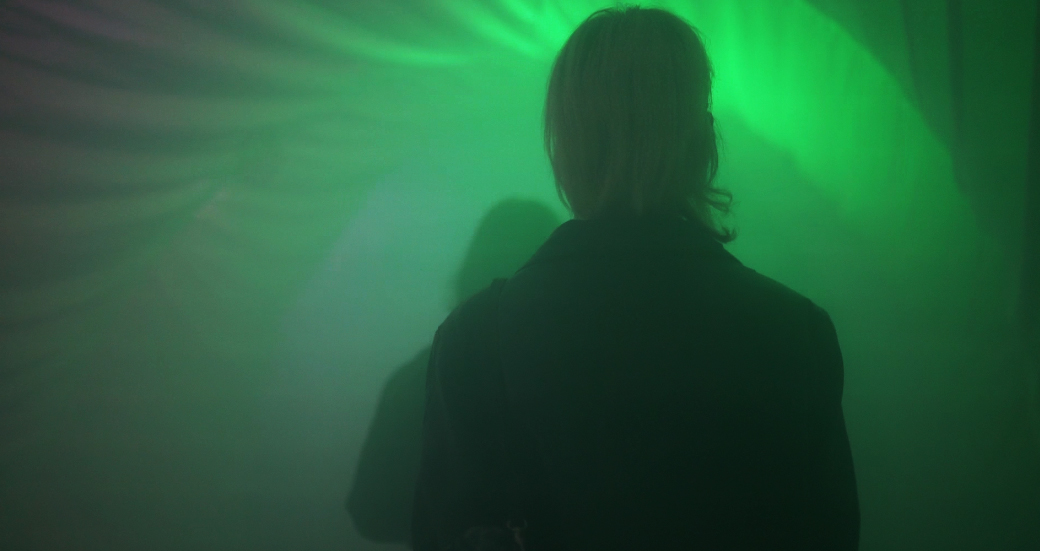




Next, the visitor enters an area where these two Images and an oculus are exhibited. The Photographs combine realistic and 3D. They present and question what the digital future could look like and partly already does.
Screens will be exchanged with glasses, contact lenses, or an implanted chip.
So we won't stare into our phones but instead have the virtual information embedded into our real-life vision, as represented by the stones and the 3D avatar.
The metaverse is being built, and holographic glasses are already being used to discover Mars.
In addition, research is being done on modifying the human body so that we evolve into cyborgs and brain-computer interfaces translate brain activity into digital commands, allowing you to control visual interfaces in real time.
How will this affect our communication and closeness to others?
How can we make this not further increase the digital gap?
How sustainable will this be?
Therefore, will we be able to teleport ourselves in the form of holograms or robots that we control through technology as we view the world from their eyes?
Visitors could enter the Metaverse through an oculus at the exhibition and get a first glimpse of the experience.
Photography, Edit, 3D Elements, and 3D character made by Lilli Minhoff
The Model is Sandra Delic
The mirror installation addresses identity in virtual space.
The Virtual Self is a chosen documentation of our Past Self. It is a static representation built up from various photos, videos, and words of a person.
The Real Self is fluid. We are constantly moving in time and evolving. So the static presentation is not the representation of our true selves.
Any virtual representation of a person is incomplete. We can never see their true self.
The Frozen Barbie is a metaphor for the perfect self - a moment frozen in time. Barbie portrays the toxic beauty ideal mainly presented in media - young, white, skinny.
The ice is dripping on the mirror, causing the reflection to distort. The person viewing the installation and reflecting in the mirror represents the Real Self.
So the perfect representation on the internet distorts our image of the Real Self.
The mirror represents the view from the outside at us because we do this when we look at our profile. In real life, we look out of ourselves at the world, not at ourselves. Therefore, we are more prone to comparing our virtual selves.
Various studies have identified a strong connection between the intensive usage of social media and an enhanced risk of depression, anxiety, loneliness, self-harm, and even suicidal thoughts. For example, social media can cause people to experience a feeling of inadequacy about themselves or how they look.
Be aware of how it may influence you.

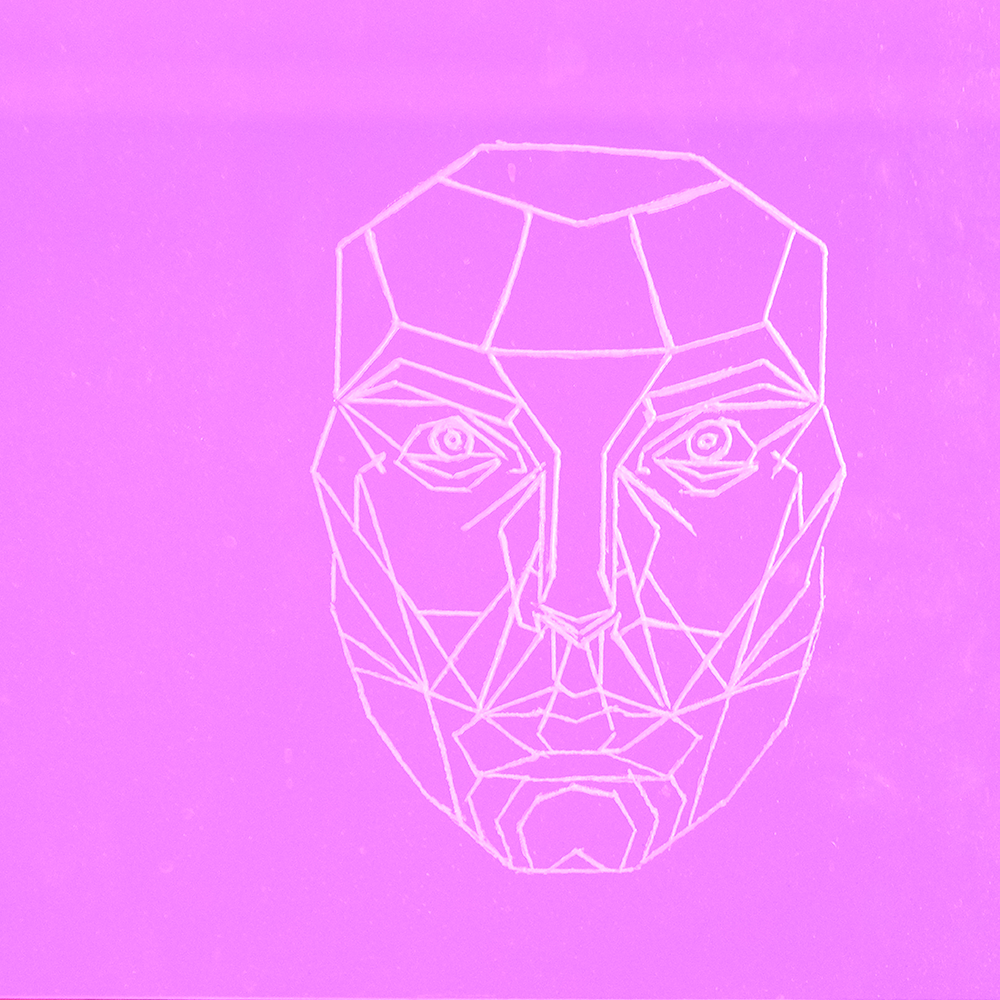

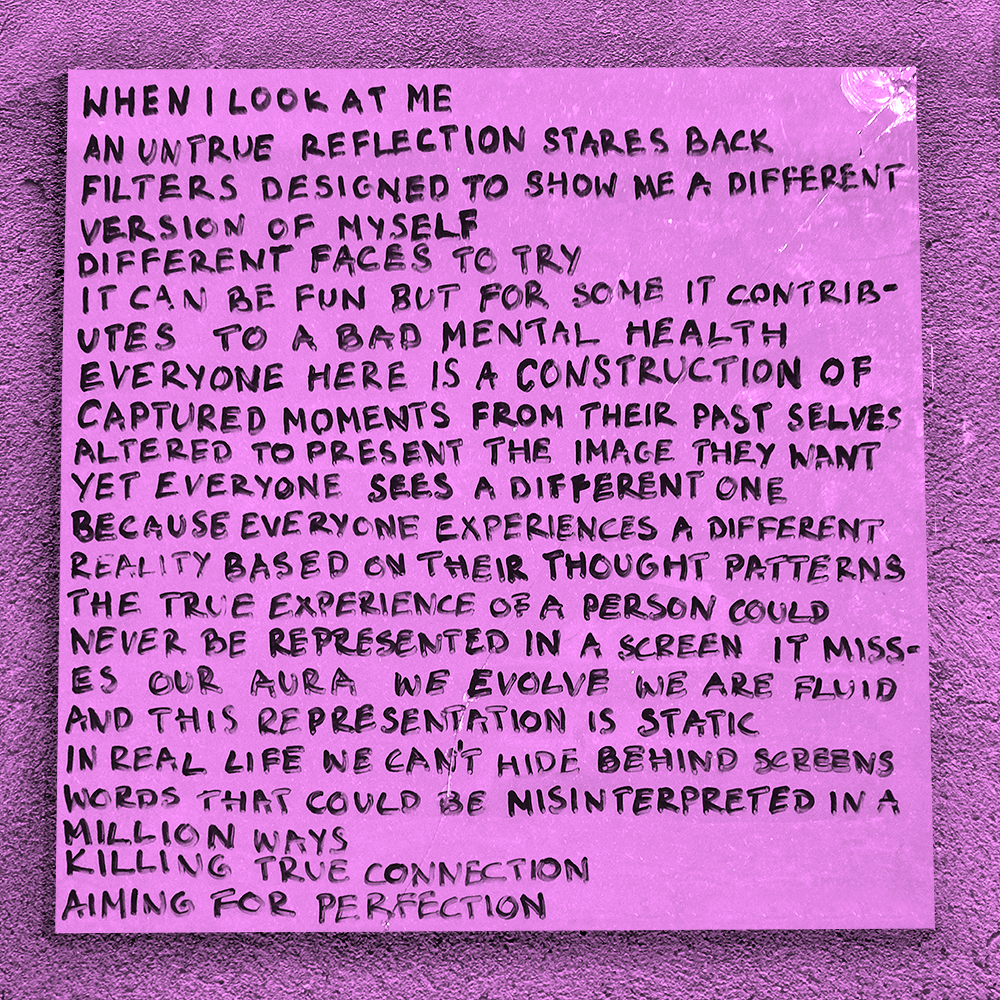


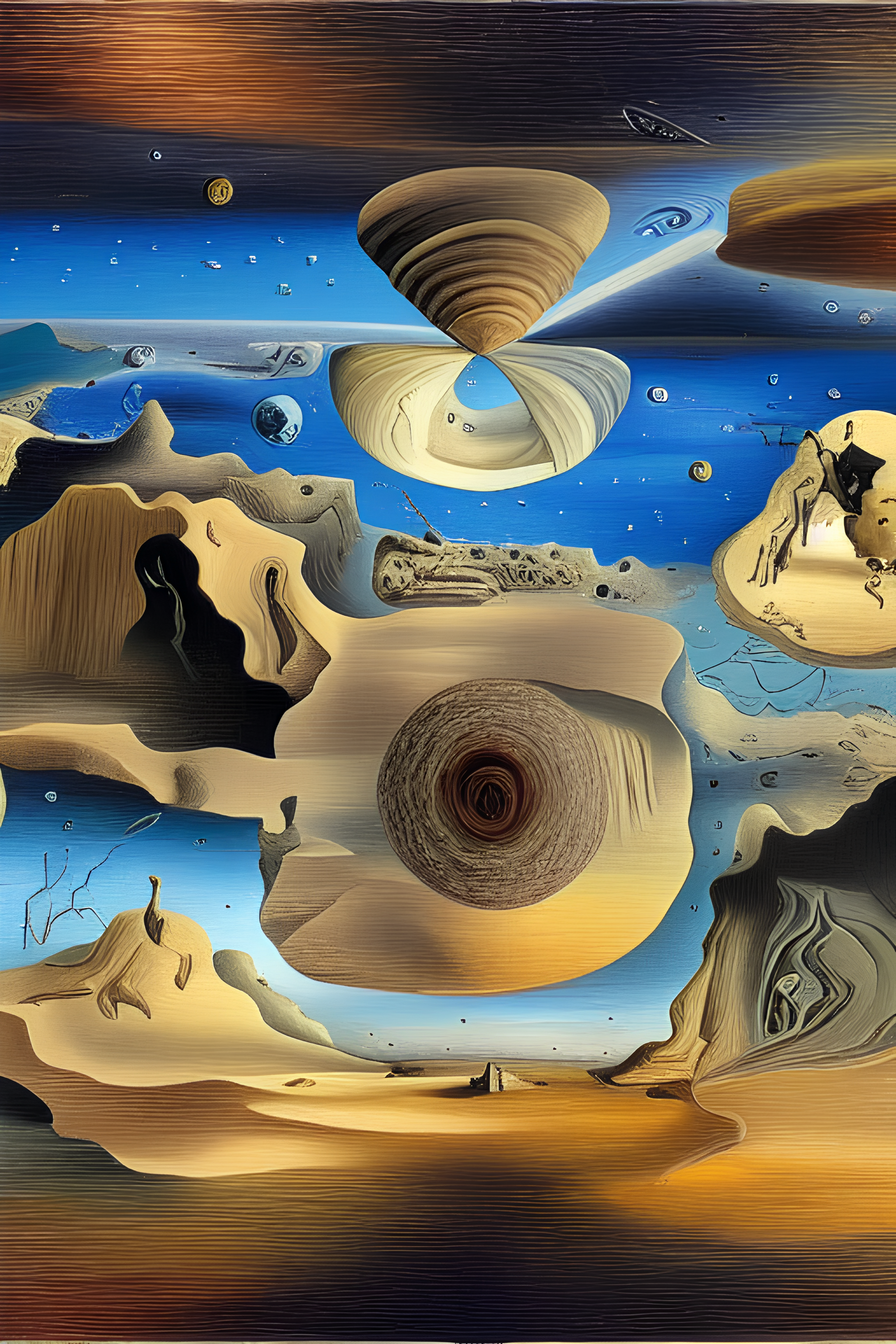



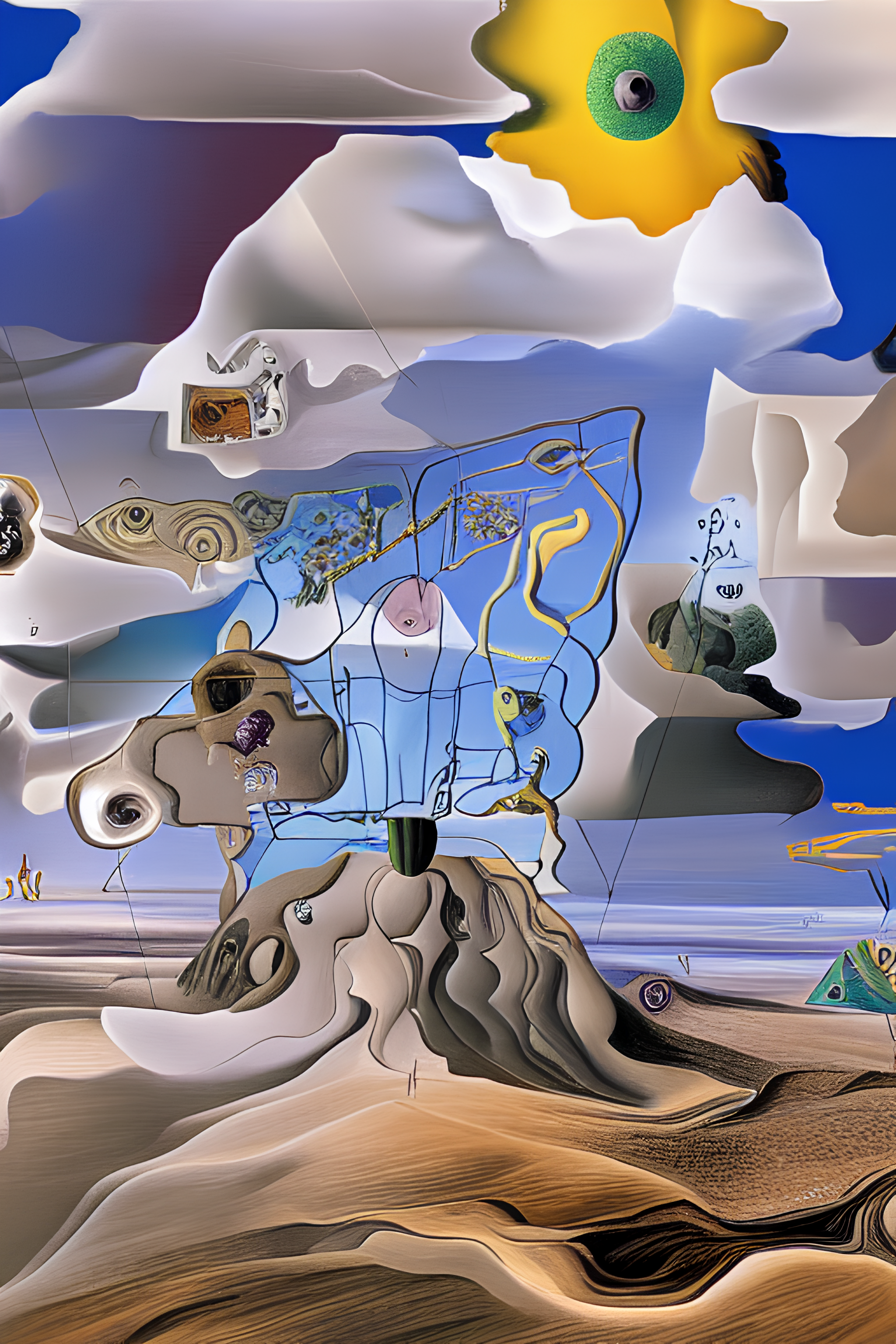
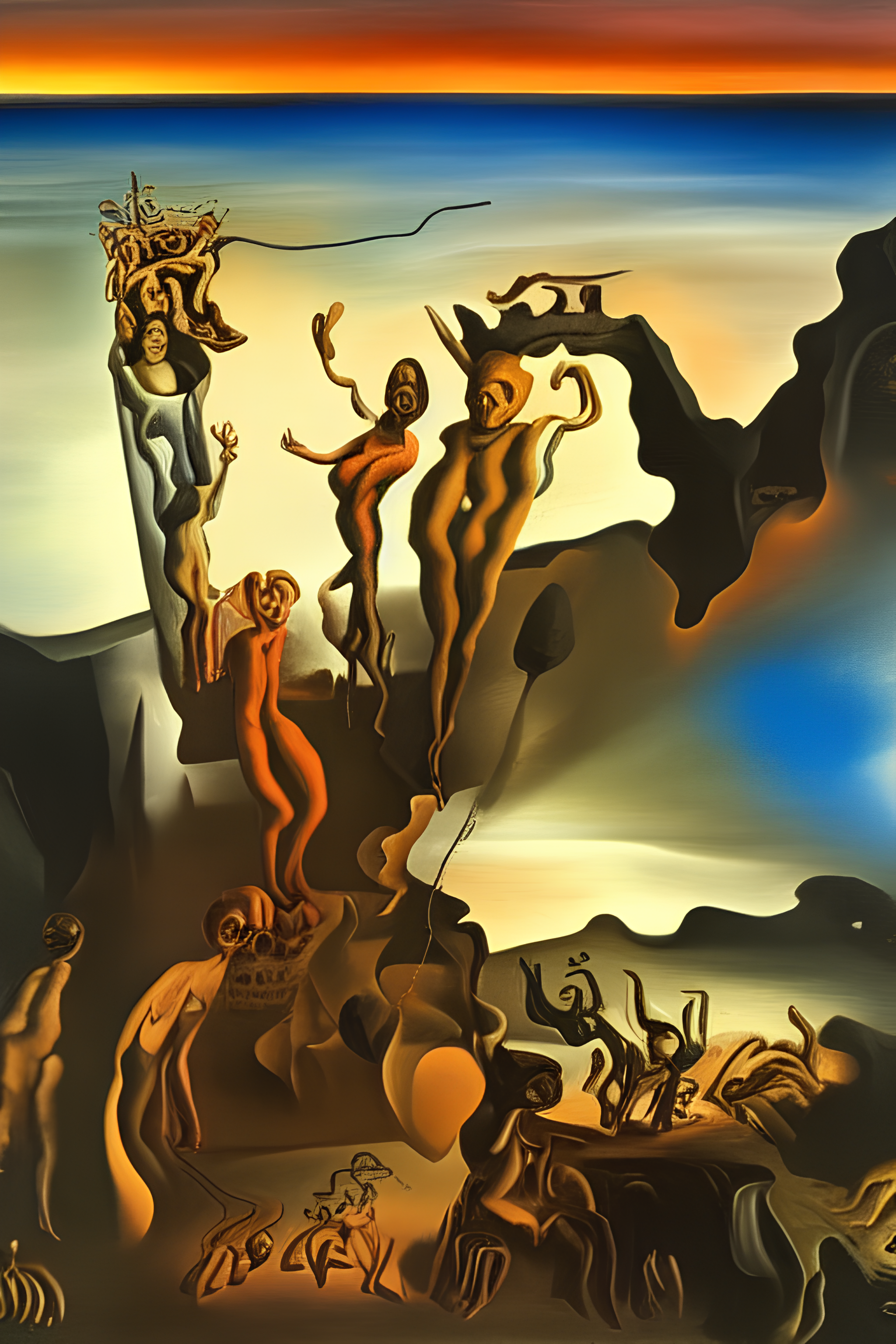
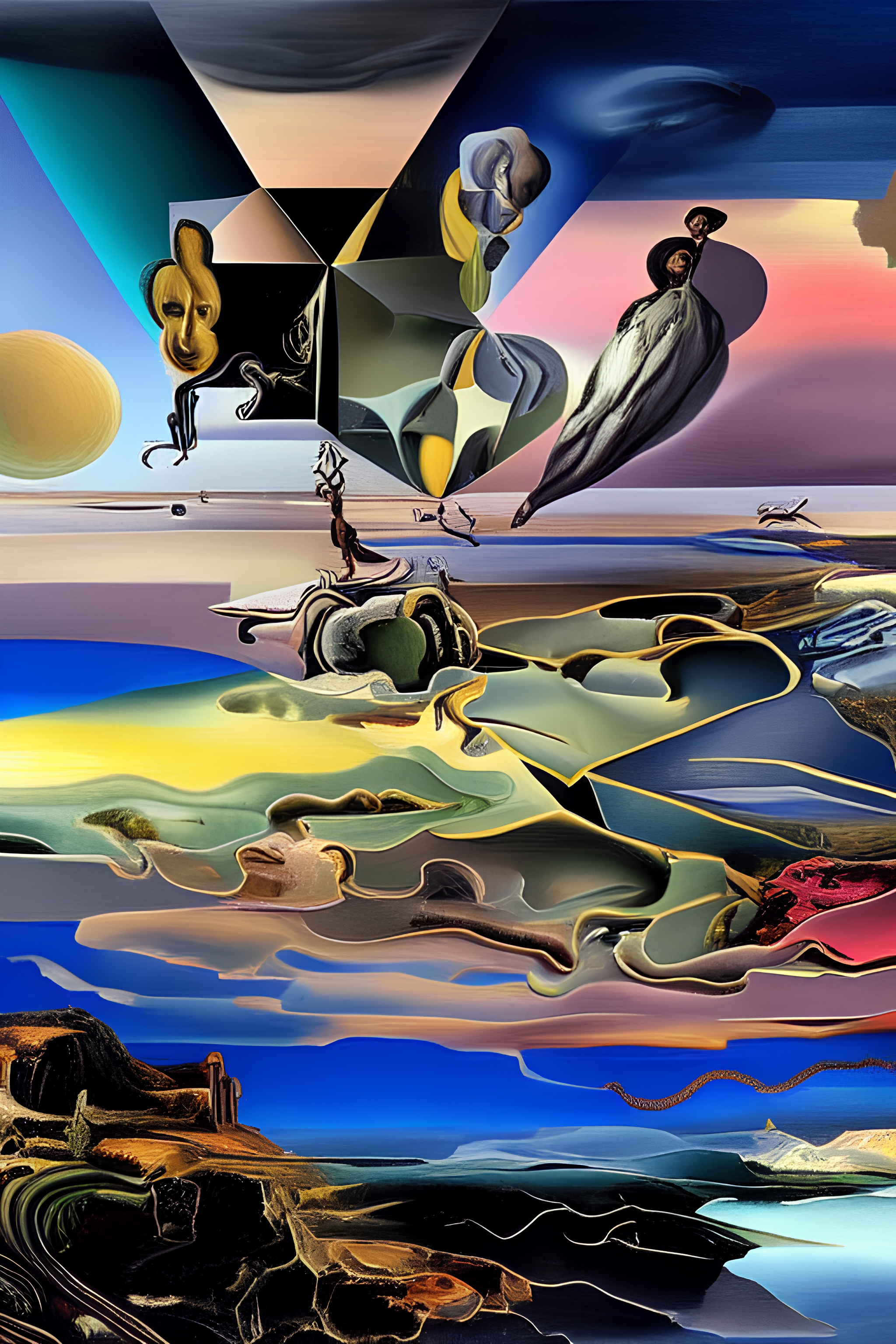



These works represent another facet of technological development - AI. Artificial Intelligence. It is so far developed that it can also make art.
Minhoff thought of a concept and described it to the AI Generator in simple words. The generator produced frighteningly good images. She edited and joined these with photoshop and thus created these worlds.
Will those generators take the job of artists in the future because it is much cheaper and faster than hiring a person?
However, the generator also always needs already created works to create something from it, instead of acting on its creativity, so the human remains an essential part of creating.
Minhoff thought of a concept and described it to the AI Generator in simple words. The generator produced frighteningly good images. She edited and joined these with photoshop and thus created these worlds.
Will those generators take the job of artists in the future because it is much cheaper and faster than hiring a person?
However, the generator also always needs already created works to create something from it, instead of acting on its creativity, so the human remains an essential part of creating.
Aftermovie